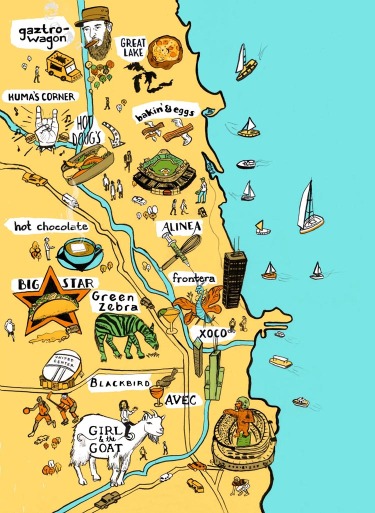





 Also the argumentation that people don't want to take their shopping bags in museums, let them choose to walk clockwise (=museum route) while they were looking at the shopping route.
Also the argumentation that people don't want to take their shopping bags in museums, let them choose to walk clockwise (=museum route) while they were looking at the shopping route. In both cases, there were some participants who mentioned that the order (you go shopping and see museums or you go see museums and shopping) has an influence on the route they chose. However, they didn't know that the order was consciously picked.
In both cases, there were some participants who mentioned that the order (you go shopping and see museums or you go see museums and shopping) has an influence on the route they chose. However, they didn't know that the order was consciously picked. 


 In this case the route has become an ellipse with the icons on the route with the use of depth perception > bigger icons come first. Next to this a gradient is used to make icons look further away with a depth gradient. The building is used to attract people to the lighter side of the route. However since the contrast is bigger on the other side there are some contradicting aspects and people are attracted to the other side.
In this case the route has become an ellipse with the icons on the route with the use of depth perception > bigger icons come first. Next to this a gradient is used to make icons look further away with a depth gradient. The building is used to attract people to the lighter side of the route. However since the contrast is bigger on the other side there are some contradicting aspects and people are attracted to the other side.After the presentation last Tuesday we received some comments we can use to improve our concept.
Comments:
- The route can not be used as an indicator and needs to be 100% the same in both images.
- It is logical to place the starting point at the bottom.
- The route needs to be represented in a circle, but should not be exactly shown in the image.
- Occlusion does not seem to work at all times.
- Contrast need to be visible when eyes are pinched.
- Check for the affordances if you would go to the high buildings or try to avoid them.
- Water can be used as a reference point (how many bridges do you need to cross).
- The map can not be brought along; it is a point of taking the route clockwise or counterclockwise.
- Color can be more important than size.
- A person can not be used as an indicator; it almost functions as an arrow.
Unfortunately our solution did not really fit the desired result, so there need to be some changes, which we will try to implement in the upcoming week.

This map shows how a group of people is connected, who knows who.


